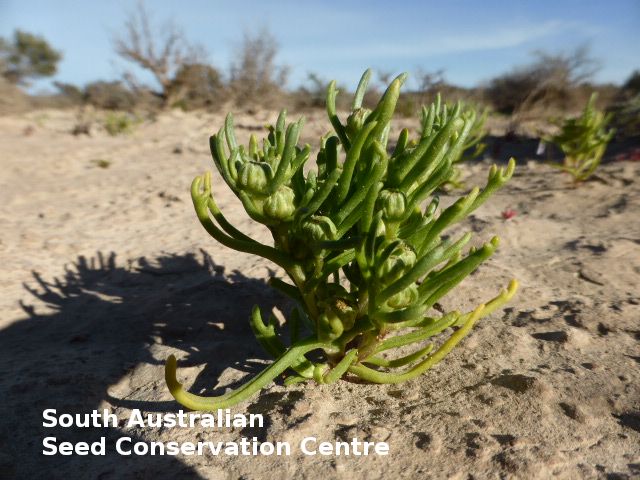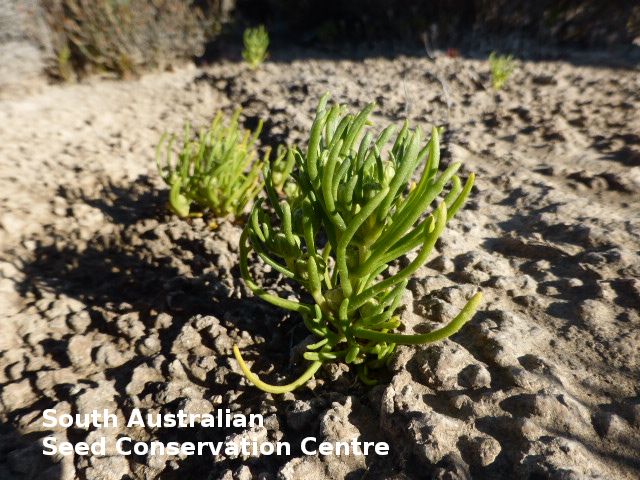







Common names
Salt Button-daisy
Salt Button-heads
Etymology
Chondropyxis from the Greek 'chondros' meaning a cartilage and 'pyxis' meaning a box; referring to the fruiting capitulum which consists of persistent cartilaginous scales holding the achenes on the receptacle. Halophila from the Greek 'halo-' meaning salt and 'phileo', meaning love, referring to the habitat preference for saline or semi-saline environments.
Distribution and status
Found only from the salt lakes between Penong and Point Sinclair in South Australia, growing on gypseous soils at margins of salt lakes. Also found in Western Australia. Native. Rare in South Australia. Uncommon in Western Australia.
Herbarium region: Eyre Peninsula
NRM region: Eyre Peninsula
AVH map: SA distribution map (external link)
Plant description
Compact herb to 7 cm high with regularly cymose-branched, glabrous stems. Leaves subamplexicaul, linear and entire or rarely dilated near the apex with a single lateral lobe, to 35 mm long and 1.5 mm wide, subterete, succulent, glabrous, green. Flower-heads borne at successive levels, the uppermost overtopped by the leaves, the others in the dichotomous forks of branches with straw-coloured daisy-flowers. Flowering between September and October. Fruits are small straw-coloured daisy-head, receptacle and scales persistent and hardened in fruit, retaining the fertile achenes except for the outermost. Seeds are yellow ovoid achenes to 2 mm long and 1 mm wide, covered in hairs. Seed embryo type is spatulate fully developed.
Seed collection and propagation
Collect seeds between November and January. Collect heads or whole plants that are brown or turning brown. Each head should have numerous tiny seeds. Place the heads in a tray for a week to dry. Then rub the heads gently with your hands to dislodge the seeds. Use a fine sieve to separate the seeds from the unwanted material. The seeds are tiny dark brown and ovoid in shape. Store the seeds with a desiccant such as dried silica beads or dry rice, in an air tight container in a cool and dry place.
| Location | No. of seeds (weight grams) | Number of plants | Date collected | Collection number Collection location | Date stored | % Viability | Storage temperature |
|---|---|---|---|---|---|---|---|
| BGA MSB | 14,500 (3.76 g) 14,500 (3.76 g) | 100+ | 19-Sep-2014 | DJD3015 Eyre Peninsula | 1-Jan-2016 | 100% | -18°C, -80°C |
Number of plants: This is the number of plants from which the seeds were collected.
Collection location: The Herbarium of South Australia's region name.
% Viability: Percentage of filled healthy seeds determined by a cut test or x-ray.